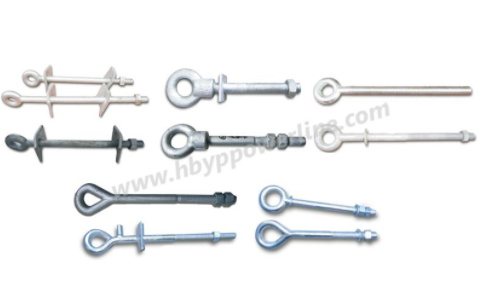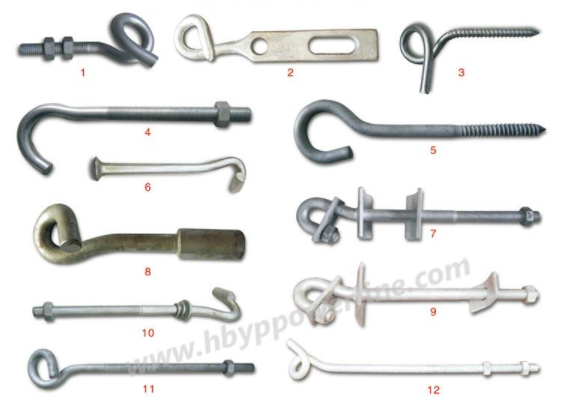How to Select and Install Eye Bolts
Eye bolts are commonly used in an assembly to lift or suspend a load. The different styles of eye bolts allow them to be attached to wood posts, steel tubing, or directly into threaded holes.
Four Main Types of Eye Bolts
Regular Eye Bolts
These fittings are very versatile and are designed to be inserted through a hole and secured on the back side with the provided nut. Regular eye bolts have a working load limit which should be taken into consideration when used for lifting or supporting an overhead load. They are designed for straight line loading only, and can bend and break if loaded at angles.
Shoulder Eye Bolts
Shoulder eye bolts have a supporting shoulder that allows them to be loaded at slight angles, if properly installed. These fittings are very versatile and are designed to be inserted through a hole and secured on the back side with the provided nut. Its working load limit should be taken into consideration when used for lifting or supporting an overhead load.
Lag Eye Bolts
Lag eye bolts have threads designed to screw into wood. They don’t have a working load limit because their strength is dependent on the species and condition of the wood it is screwed into. For example: A lag eye bolt will hold more load when screwed into a new oak board, compared to an old pine fence post.
Machinery Eye Bolts
Machinery eye bolts are often used to screw into pieces of equipment to serve as a lifting point. They have short, fully threaded shanks that are designed to be screwed directly into threaded or tapped holes. These fittings have a shoulder allowing for lifting at slight angles, and a listed working load limit.
Angular Loading
Oftentimes, loads are applied to eye bolts at an angle and for these types of applications shoulder eye bolts should only be used.
Loading at an angle can alter the working load limit of the eye bolt.
It is important to note that all eye bolts are designed for loading with the axis at the center of the eye. They should never be loaded perpendicular to that axis because they are likely to bend and break.
Eye Bolt Working Load Limit Effects due to Angular Loading
The degree of angle of your load can have a big effect on the working load limit of the eye bolt.
At 0 to 5 degrees, the eye bolt is rated at 100 percent of its working load limit. In this case, the catalog working load limit of this 3/8th inch eye bolt is 1,550 pounds.
At 15 degrees, the working load limit is reduced by 20% and the effective working load limit of the eye bolt becomes 1240 pounds, which is 80% of the original rated capacity.
30 degrees makes for 65% of the original rated capacity.
45 degrees makes for 30% of the original rated capacity.
90 degrees makes for 25 % of the original rated capacity. The 75% reduction in capacity makes the effective working load limit only 388 lbs.
Swivel Hoist Rings: Alternative Choice for Angular Loading
Because of the effect that angles have on eye bolts and working load limits, we recommend using swivel hoist rings as an alternative choice. The advantage to them over eye bolts is that they maintain 100 percent of the working load limit at any angle from 0 to 90 degrees.
Size Designation of Eye Bolts
The size designation for eye bolts are common across all types. This is a ½” x 6" shoulder eye bolt and a ½” x 6" Stainless steel lag eye bolt. The ½” measurement references the diameter of the shank. The ½” measurement references the diameter of the shank. The 6” measurement refers to the length of the shank.
The larger the diameter of the shank, the larger the working load limit. A longer shank length allows you to go through thicker objects. The threaded portion varies for each eye bolt, so visit our website if you need more detailed dimensions of our eye bolts.
Materials and Finishes
We offer our eye bolts in stainless steel, hot dipped galvanized steel, and self-colored finishes.
Stainless Steel is the most corrosion resistant and has the best-looking finish.
Hot dip galvanizing provides good corrosion resistance and added strength.
Self-colored eye bolts are uncoated and designed to be painted by the end user.
Strength and Durability from Manufacturing
An indicator for how strong or durable an eye bolt will be is the way it is manufactured. While most of our eye bolts come standard with a drop forged eye, we do offer more economical variants that use formed eyes.
Drop forged or cast eyes are recommended for critical applications.
Installing Eye Bolts
Installing Machinery Eye Bolts
Machinery eye bolts are primarily intended to be installed into tapped holes. The eye bolts are threaded to UNC standard and the hole needs to be tapped accordingly to ensure the shoulder will be firmly seated against the object to be lifted.
When drilling and tapping the hole for the eye bolt, the hole depth should be the length of the shank plus one half the diameter of the shank.
As mentioned earlier, eye bolts are to be used so that loads are applied about the axis of the eye.
When installing machinery eye bolts it may be necessary to add washers to shim the eye bolt to achieve the correct alignment.
We will illustrate this by attaching 4 machinery eye bolts to each corner of this lifting box. Note that all the eye bolts are NOT “in line.”
To correct this, we are going to add washers as needed to get the eye bolts into the “in line” position.
Installing Regular and Shoulder Eye Bolts
First, determine thickness of what the eye bolt will be going through.
Then, choose an eye bolt with a shank long enough so that the threads protrude on the back side and allow the nut to be tightened properly.
If the unthreaded portion of the shank protrudes below the bottom surface and does not allow the nut to be tightened, you can use washers to fill the space of the unthreaded portion of the shank.
General Safety Precautions
When selecting an eye bolt, it is necessary to know the load that will be applied to the eye bolt. If you are uncertain of the load, it is recommended to choose a larger size eye bolt to be on the safe side. Always take into consideration the working load limit of the object to which you are fastening the eye bolt to as this will effect the working load limit of your entire rigging assembly.
Always inspect eye bolts before use.
Never use an eye bolt that shoes signs of wear or damage.
Always be sure threads on shank and receiving holes are clean.
Never machine, grind, or cut eye bolt.
We are an eye bolts supplier. Please feel free to contact us if you need them!



评论
发表评论